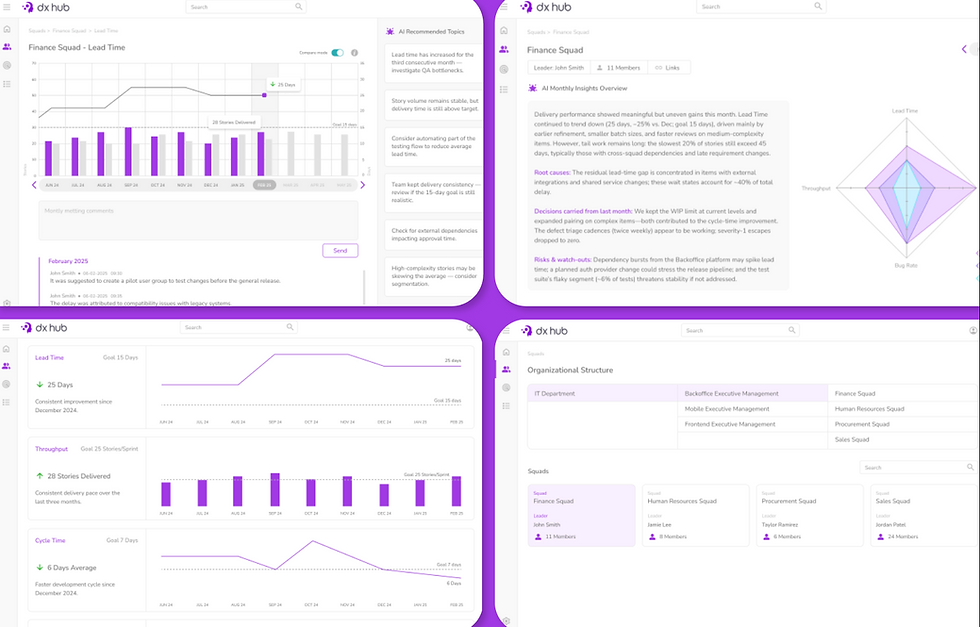Evaluating Software Architecture: A Guide to Better Business Outcomes
- Avalia

- Mar 25, 2024
- 3 min read
In today's digital era, technology serves as the cornerstone of growth, making the architecture of software applications a critical area for any business's focus. The way a software is built - its architecture - plays a pivotal role in determining a company's efficiency, ability to scale, safeguard against threats and drive profits. The pressing question, however, is how businesses can assess the quality and robustness of their software's architecture. Equally crucial is understanding why companies, regardless of their size, should prioritize this evaluation.

The What and Why of Software Architecture Evaluation
Software architecture is essentially the blueprint of a software system. It outlines how software components interact, the data flow between them, and the underlying infrastructure required to support the system's operation. Evaluating this architecture is akin to conducting a health check-up, ensuring that the system is not just fit for today's needs but is also scalable for tomorrow's growth.
The reasons for conducting such evaluations range from assessing the system's ability to meet current and future business requirements, understanding risks, especially those related to security and data integrity, and ensuring that the technology stack is robust and agile enough to adapt to new technologies and market demands.
Simplifying the Complex: Methodologies and Practices
At its core, evaluating software architecture involves a blend of qualitative and quantitative assessments. This includes reviewing the system's design documents, codebase, and infrastructure setup, as well as interviews with the development and operations teams. However, the process doesn't have to be daunting. Simplifying it into a few key steps can make it more approachable:
Define Objectives: Clearly outline what you aim to achieve with the evaluation. Is it to assess scalability, security, maintainability, or all of the above?
Gather and Review Documentation: Collect all relevant documentation, including design documents, system specifications, and architecture diagrams. This provides a theoretical understanding of the system.
Conduct Interviews: Engage with the development, operations, and business teams to gather insights on the system's performance, challenges, and how well it meets business needs.
Use Tools and Platforms: Leverage tools for static code analysis, performance monitoring, and security vulnerability scanning to gather empirical data about the system.
Analyze Findings: Compile and analyze the data collected to identify gaps, risks, and opportunities for improvement.
Introducing Avalia Systems: Pioneers in Software Due Diligence
For businesses looking to navigate the complexities of software architecture evaluation, Avalia Systems emerges as a beacon. With decades of experience in software development and business acumen, Avalia Systems brings a unique blend of expertise and innovative approaches to the table. Our proprietary platform and tools, coupled with a proven methodology, empower businesses to not just evaluate their software architecture but to also envision a roadmap for technological investment that aligns with their growth strategy.
At Avalia Systems, we understand that every business is unique. Our approach is tailored to meet the specific needs of our clients, leveraging our network of trusted experts to deliver insights that are not just deep but also actionable. By partnering with us, businesses can ensure that their investment in technology is sound, secure, and primed for future challenges and opportunities.
Evaluating the software architecture of a system is not just about ensuring that the technology works. It's about making informed decisions that drive better business outcomes. In a world that's constantly evolving, having a robust, scalable, and secure software architecture is not just an advantage; it's a necessity. With the right partner, like Avalia Systems, businesses can navigate this complex landscape with confidence, ensuring that their technological foundation is not just strong but also a step ahead of the curve.


